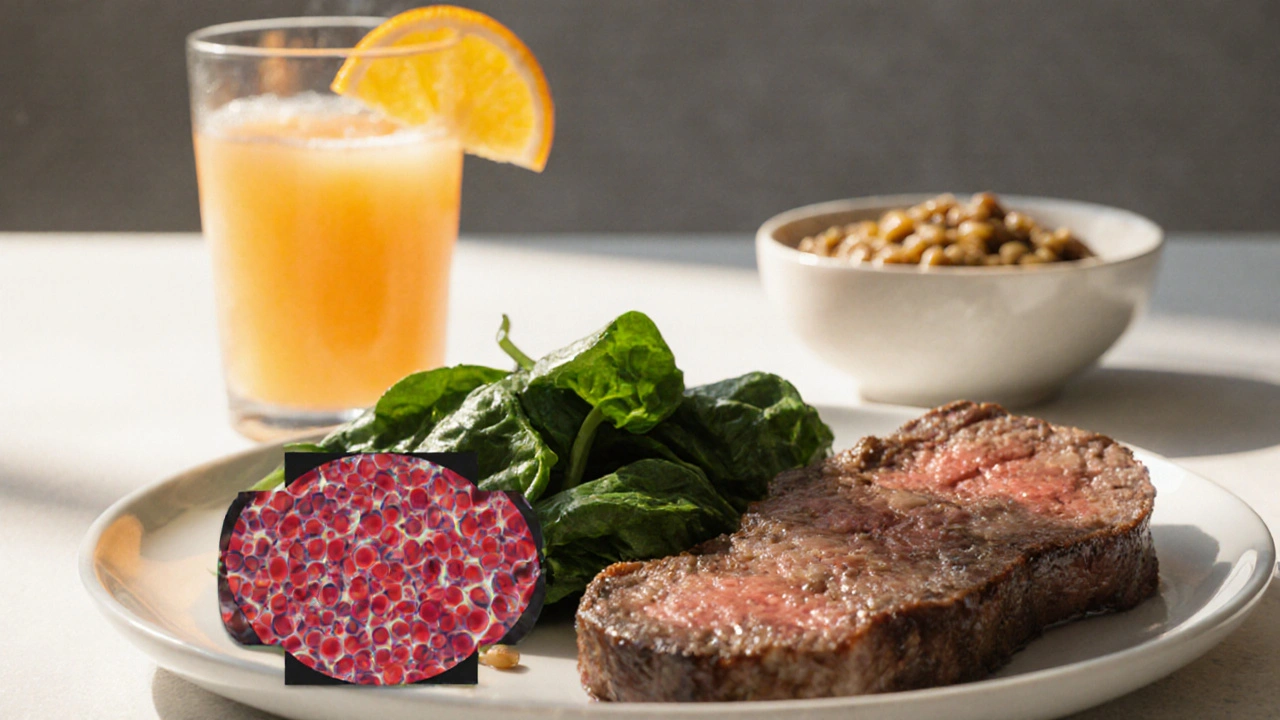Sickle Cell Nutrition: What to Eat and Avoid to Manage Symptoms
When you live with sickle cell anemia, a genetic blood disorder that causes red blood cells to become rigid and sickle-shaped, leading to pain, fatigue, and organ damage. Also known as sickle cell disease, it doesn’t just affect your blood—it changes how your body uses food and water. What you eat isn’t just about feeling full. It’s about keeping your cells healthier, reducing painful crises, and giving your body the tools it needs to fight off infections.
One of the biggest things you can do is stay hydrated, a simple but critical factor in preventing sickle cell crises. Dehydration makes your blood thicker, which increases the chance of cells clumping and blocking blood flow. Drink water all day—not just when you’re thirsty. Aim for at least 8 to 10 glasses, more if it’s hot or you’re active. Avoid sugary drinks and caffeine—they pull water out of your body instead of helping you keep it.
Folate, a B vitamin needed to make new red blood cells, is another key player. People with sickle cell anemia burn through red blood cells faster than normal, so your body needs more folate to keep up. Foods like spinach, lentils, black-eyed peas, and fortified cereals are easy, affordable ways to get it. You might also need a supplement—talk to your doctor.
Iron is tricky. While anemia sounds like it means you need more iron, that’s not always true. Sickle cell patients often have enough or even too much iron because of repeated blood transfusions. Too much iron can damage your liver and heart. Don’t take iron pills unless your doctor says so. Instead, focus on antioxidants, nutrients that protect cells from damage caused by stress and inflammation. Berries, carrots, sweet potatoes, nuts, and seeds are packed with them. They help reduce the oxidative stress that worsens sickle cell symptoms.
Protein matters too. Your body needs it to repair tissues and fight infections. Lean meats, eggs, beans, tofu, and Greek yogurt are good choices. If you’re losing weight or feeling weak, you may need more. Don’t skip meals. Eating small, balanced meals throughout the day keeps your energy stable and your body running smoother.
Some foods can make things worse. Avoid processed snacks, fried foods, and sugary cereals—they cause inflammation and drain your energy. Alcohol and smoking? Skip them. Both can damage your blood vessels and make crises more likely. And if you’re taking hydroxyurea or other medications, check with your doctor before trying herbal supplements. Some can interfere with treatment.
This isn’t about perfection. It’s about consistency. A few smart changes—drinking more water, adding spinach to your smoothie, swapping chips for almonds—can add up. People who stick to a simple, balanced diet report fewer pain episodes, better sleep, and more energy. You don’t need a fancy meal plan. Just focus on real food, stay hydrated, and listen to your body.
Below, you’ll find real guides from people who’ve walked this path—what worked, what didn’t, and how to make nutrition work for your daily life with sickle cell anemia.
Diet & Nutrition Strategies for Managing Sickle Cell Anemia
Learn how specific nutrients, hydration, and meal planning can help manage sickle cell anemia symptoms, reduce pain crises, and improve overall health.
More
